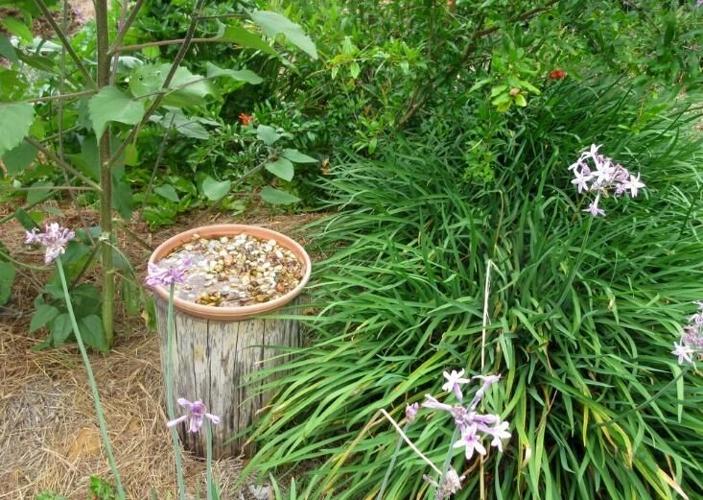If you've ever watched a butterfly dance through your garden or a fuzzy bee hover near a flower bloom, you've witnessed nature's quiet brilliance. But with habitat loss and pesticide use threatening pollinator populations worldwide, those small encounters are becoming rarer. Thankfully, there's a stylish, satisfying, and sustainable way to fight back—right in your own backyard. Whether you've got an expansive lawn or a modest balcony, building a pollinator waystation is a DIY project that turns your space into a haven for bees, butterflies, and beyond.

What's a Pollinator Waystation?
A pollinator waystation is more than a patch of pretty plants—it's a thoughtfully designed rest stop for pollinators like bees, butterflies, moths, and hummingbirds. These waystations provide food (nectar and pollen), shelter, and space to reproduce. They're especially vital for migrating species like monarch butterflies, which rely on scattered, connected oases during their epic journeys.
Why It Matters
Pollinators are responsible for over one-third of the food we eat. Without them, many fruits, veggies, and even your morning coffee would disappear. But pollinators are in crisis. Bee populations are declining. Monarchs are on watch lists. Creating a pollinator haven isn't just pretty—it's powerful. You're actively helping reverse ecological decline from the ground up.
And let's not overlook the wellness bonus. Gardening is meditative, mood-boosting, and screen-free. A pollinator garden gives back in more ways than one.
What You'll Need
Creating a DIY pollinator waystation is refreshingly low maintenance. Here's what you'll need:
Native Plants: Choose a mix of flowering perennials and milkweeds native to your region. Native plant species adapt to your local climate and provide the best nutrition for local pollinators.
A Sunny Spot: Most pollinator-friendly plants love the full sun (at least 6 hours per day).
Water Source: A shallow dish with pebbles makes a great bee bath.
Pesticide-Free Zone: Commit to organic methods—no sprays or synthetic fertilizers.
Optional But Lovely: Logs, flat rocks for sunbathing, or a bee hotel for native solitary bees.
Step-by-Step: How to Build a Pollinator Waystation
Step 1: Scope Out Your Spot
Choose a sunny area with well-draining soil. It could be a backyard corner, a raised bed, or even a few large pots on a patio. Just be sure it's away from chemical treatments like lawn sprays.
Step 2: Prep the Soil
If you're working directly in the ground, clear grass and weeds. Loosen the soil and add compost to give your plants a nutrient boost. For containers, use organic potting mix.

Step 3: Choose Your Plants Wisely
The secret sauce is biodiversity. Select native plants that bloom in succession from early spring to late fall. Here are some North American favorites:
Milkweed (Asclepias spp.) – Essential for monarchs
Purple Coneflower (Echinacea purpurea) – Loved by bees and butterflies
Bee Balm (Monarda) – Bright, fragrant, and hummingbird-friendly
Black-Eyed Susan (Rudbeckia hirta) – Hardy and cheerful
Goldenrod (Solidago) – A late-blooming pollinator buffet
Stick to at least three different species per bloom season (spring, summer, fall). Grouping the same plants together in clusters helps pollinators locate them more easily.
Step 4: Plant and Mulch
Plant your selections according to spacing guidelines. Then apply a light layer of mulch to retain moisture and discourage weeds—but leave a few patches of bare ground for ground-nesting bees.
Step 5: Add Water and Shelter
Place a small shallow dish filled with water and pebbles in your garden for thirsty and dehydrated bees. Nestling a few logs, sticks, or even a small pile of leaves nearby offers shelter and nesting space.
Step 6: Maintain with Intention
Pollinator gardens are largely self-sustaining, but little attention goes a long way. Water new plants until established. Deadhead spent flowers to encourage more blooms. Leave the stems and seed heads standing through winter, they provide food and nesting sites when nothing else does.
Want to Go the Extra Mile?
Register your waystation with Monarch Watch (monarchwatch.org) to be part of a national network helping support butterfly conservation. It's a great way to celebrate your impact and connect with others doing the same.
You can also build a bee hotel from scrap wood or bamboo stalks to offer a haven for native solitary bees like mason bees, which are excellent pollinators.
Fashion Meets Function
One of the best things about a pollinator waystation? It's stunning. This isn't your average veggie patch or basic flower bed. The colors, textures, and constant flutter of wings create a dynamic landscape that changes with the seasons—and never gets old. Whether you're sipping rosé on your patio or snapping dreamy macro shots for Instagram, your garden will always be giving main character energy.

In a time when climate headlines can feel overwhelming, this is one thing you can do. It's tangible. It's beautiful. And it invites joy into your everyday life. Creating a pollinator waystation isn't just about saving bees or butterflies—it's about healing something bigger, beginning right outside your door.
So, dig in. Plant with purpose. And let your backyard become a little patch of hope with wings.
About the author: Tammy Sons is the CEO and founder at TN Nursery. Tammy is an expert horticulture writer and loves to spend time with her family and all things outdoors.





(0) comments
We welcome your comments
Log In
Post a comment as Guest
Keep it Clean. Please avoid obscene, vulgar, lewd, racist or sexually-oriented language.
PLEASE TURN OFF YOUR CAPS LOCK.
Don't Threaten. Threats of harming another person will not be tolerated.
Be Truthful. Don't knowingly lie about anyone or anything.
Be Nice. No racism, sexism or any sort of -ism that is degrading to another person.
Be Proactive. Use the 'Report' link on each comment to let us know of abusive posts.
Share with Us. We'd love to hear eyewitness accounts, the history behind an article.